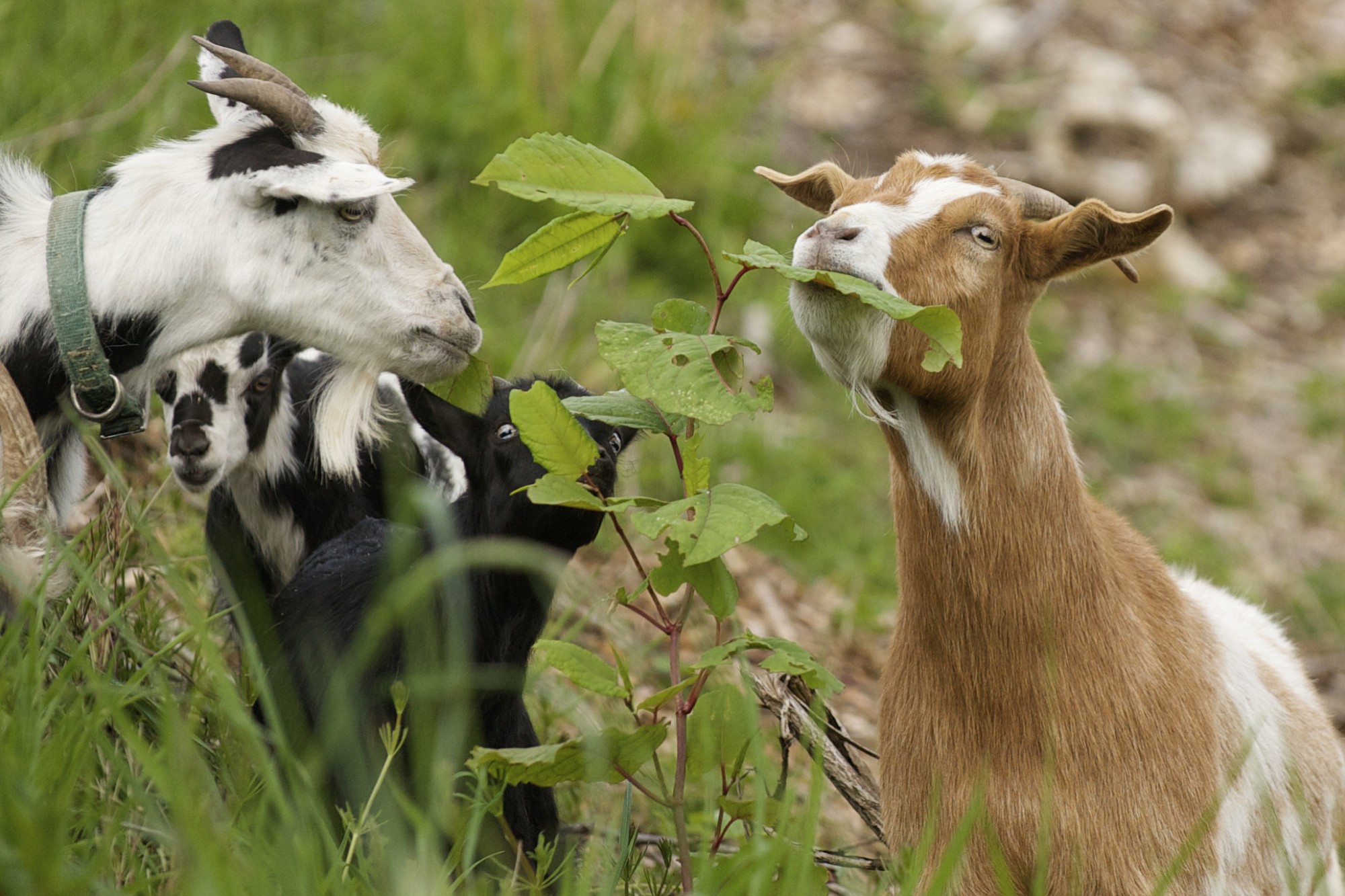BRUSH PRAIRIE — Holding a bag of animal crackers, Heidi Holmstrom swung open a trailer door and greeted the region’s traveling vegetation-management team.
“Hi, kids!” she said cheerfully, using the crackers to coax them out.
One by one, a group of 13 goats hopped out of the trailer and went to work Wednesday morning. The animals began munching weeds at a Washington State Department of Transportation stormwater facility along state Highway 503. It’s the first site among about a dozen where WSDOT plans to dispatch the herd this spring and summer.
Holmstrom, a WSDOT maintenance lead technician, raises the goats and other livestock at her home in La Center. Holmstrom’s herd was first used to control invasive plants in the area last year as part of a pilot program. They’re back on duty this year, and WSDOT has expanded the program to other parts of the state with additional herds of goats.
“It’s really taken off,” Holmstrom said.
Holmstrom essentially donates the services of her goats, said WSDOT spokeswoman Tamara Hellman. In other parts of the state, the agency has hired local herders to provide weed-eating goat power, she said.
The goats aren’t necessarily a cheaper option in those cases, Hellman said. But by using a more natural alternative to weed killers or gas-powered machines, “we’re saving on the environment,” she said.
That’s part of the reason Holmstrom first raised the idea last year, she said.
“I think it’s a really good jump-start for cutting back on some of our chemical applications,” Holmstrom said.
On Wednesday, Holmstrom watched as her goats wandered in search of knotweed, thistle, blackberry bushes and other invasive plants to devour. The group included some young kids: At 6 weeks old, Xerox was the youngest, she said.
Holmstrom can easily identify all of her goats by name. Many are related. The team now working next to Highway 503 includes a pair of siblings named Crackle and Pop. (Their cousin, Snap, stayed home for this particular job.)
The goats will continue grazing the site for a week or more before moving on to the next job. Neighbors often keep watch over the animals while they’re at various locations, but Holmstrom admits it’s difficult to leave her herd behind.
“It’s not that easy to just turn and walk away,” Holmstrom said.
So far, the program has proven to be effective. At the stormwater facility off Highway 503, where Holmstrom’s goats grazed last year, weeds have been noticeably slower to return. That’s because the goats sterilize the weed seed through their digestive process, preventing new plants from taking root, according to WSDOT.
“The goats have done a phenomenal job,” Holmstrom said.




